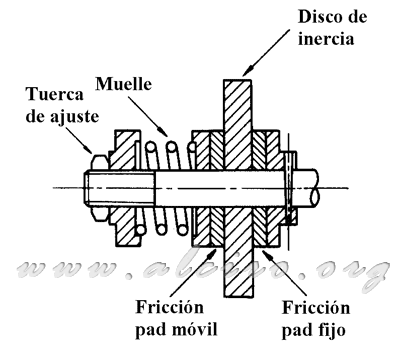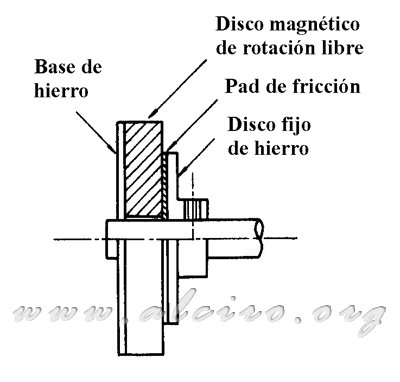2.2.4. Compensating mechanical inertia (dampers)
A method of compensating the response to a single step is to introduce extra friction (torque proportional to speed) the engine, to reduce the oscillations of the rotor. Although the result in the improvement is very significant overshoot, the use of these compensators is unsatisfactory that work at high frequencies is limited by the friction torque, acceleration and deceleration also go badly affected.

Figure 3.16. Compensator spring inertia friction.

Figure 3.17. Compensator inertia friction magnetic bearings.

Figure 3.18. Compensator inertia friction viscous friction.
There are three basic models, the inertia compensator spring-friction, Figure 3.16, magnetic friction inertia, Figure 3.17 and inertia compensator viscous friction, Figure 3.18. With all these (dampers) introduces a friction load to the motor shaft to limit the oscillations that produce the mechanical resonances, leaving him free to turn when operating at constant speed. The optimization of the inertia that has the trim must be adjusted to the system, a major problem.







